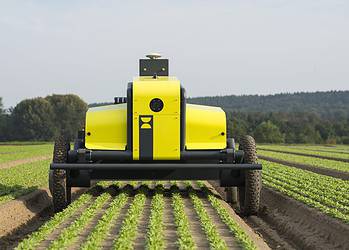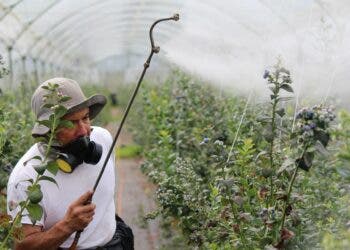Pesticides help us feed the world. Without them, we wouldn’t be even close to supporting the current population of 8.2 billion. However, pesticides have been increasingly linked to a number of different health issues. Although not all these problems have been confirmed, researchers have now linked pesticide use to stillbirth risk.

Pregnancy and pesticides
Pregnant women and the developing fetus are particularly vulnerable to pesticides. The mothers experience physiological changes during pregnancy (including altered hormone levels and immune system activity), while the fetus is vulnerable to toxin exposure. It makes sense that if pesticides were to cause any damage, this is where you’d see it first.
Researchers looked at pesticide use in Arizona and analyzed whether living within 500 meters of the pesticide application site has any effect on stillbirth. The data included 1,237,750 births and 2,290 stillbirths from 2006 to 2020. In Arizona, as in other places, multiple pesticides are often applied at the same site. So, it’s hard to distinguish the potential effect of individual pesticides.
However, researchers found that living close to pesticide application sites, not just during early pregnancy but even before conception, seems linked to an increased risk of stillbirth. The relative risk was low, but significant: from a couple of percentage points to over 7%.
“In this study, some specific ingredients stood out due to their significant associations with stillbirth risk,” said first author Melissa Furlong, Ph.D., who studies the chronic health effects of environmental contaminants as an assistant professor and environmental epidemiologist at the Zuckerman College of Public Health and a member of the Southwest Environmental Health Sciences Center at the R. Ken Coit College of Pharmacy.
“These findings underscore the importance of considering individual pesticides rather than just the overall pesticide class, as specific chemical compounds may pose unique risks. It also highlights the potential for pre-pregnancy exposures to affect reproductive outcomes.”
The main culprits
The pesticides linked to the highest preconception risk were cyfluthrin, zeta-cypermethrin, organophosphates as a class, malathion, carbaryl, and propamocarb hydrochloride. Meanwhile, during the first trimester, fenpropathrin, permethrin, organophosphates as a class, acephate, and formetanate hydrochloride were associated with stillbirths. In particular, organophosphates were linked to risk in both scenarios.
“Among organophosphates, acephate showed the strongest effect estimates on stillbirth, so that exposure to acephate in the first trimester was associated with a doubling of risk,” said co-author Paloma Beamer, Ph.D., a professor and interim associate dean at the Zuckerman College of Public Health and a member of the Southwest Environmental Health Sciences Center, U of A Health Sciences Asthma and Airway Disease Research Center and BIO5 Institute. “Within the pyrethroid class, cyfluthrin exposure during the 90 days prior to conception almost doubled the risk of stillbirth.”
People can be exposed to pesticides in different ways. The most common way is through diet, but for people living in proximity to pesticide administration, agricultural drift and direct exposure can also be important exposure pathways.
It’s important to keep in mind that this study established a correlation and did not attempt to assess causality. Nevertheless, researchers say this is enough to justify a more careful use of pesticides. It’s particularly urgent to start using individual pesticides rather than a blanket pesticide class, the team notes. In the end, we need to better assess the health impact of these pesticides and in the case of the dangerous ones, find better alternatives.
“Further research is essential to fully understand the safety profiles of various pesticides and to understand the underlying mechanisms of pesticide-induced stillbirth,” Furlong said. “This study underscores the need to develop strategies for mitigating exposure to protect maternal and fetal health.”
Melissa A Furlong et al, Pre-Conception And First Trimester Exposure To Pesticides And Associations With Stillbirth, American Journal of Epidemiology (2024). DOI: 10.1093/aje/kwae198






